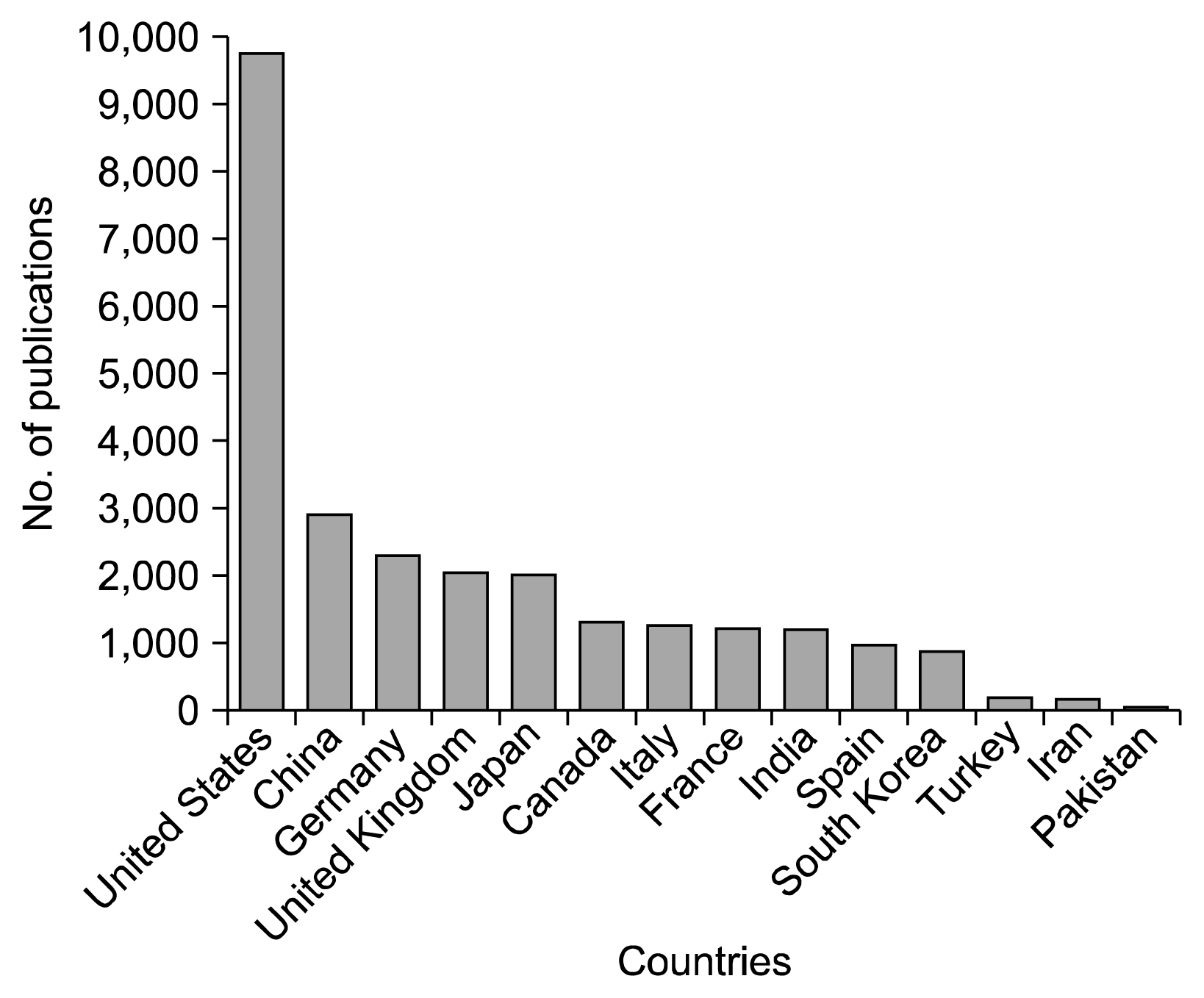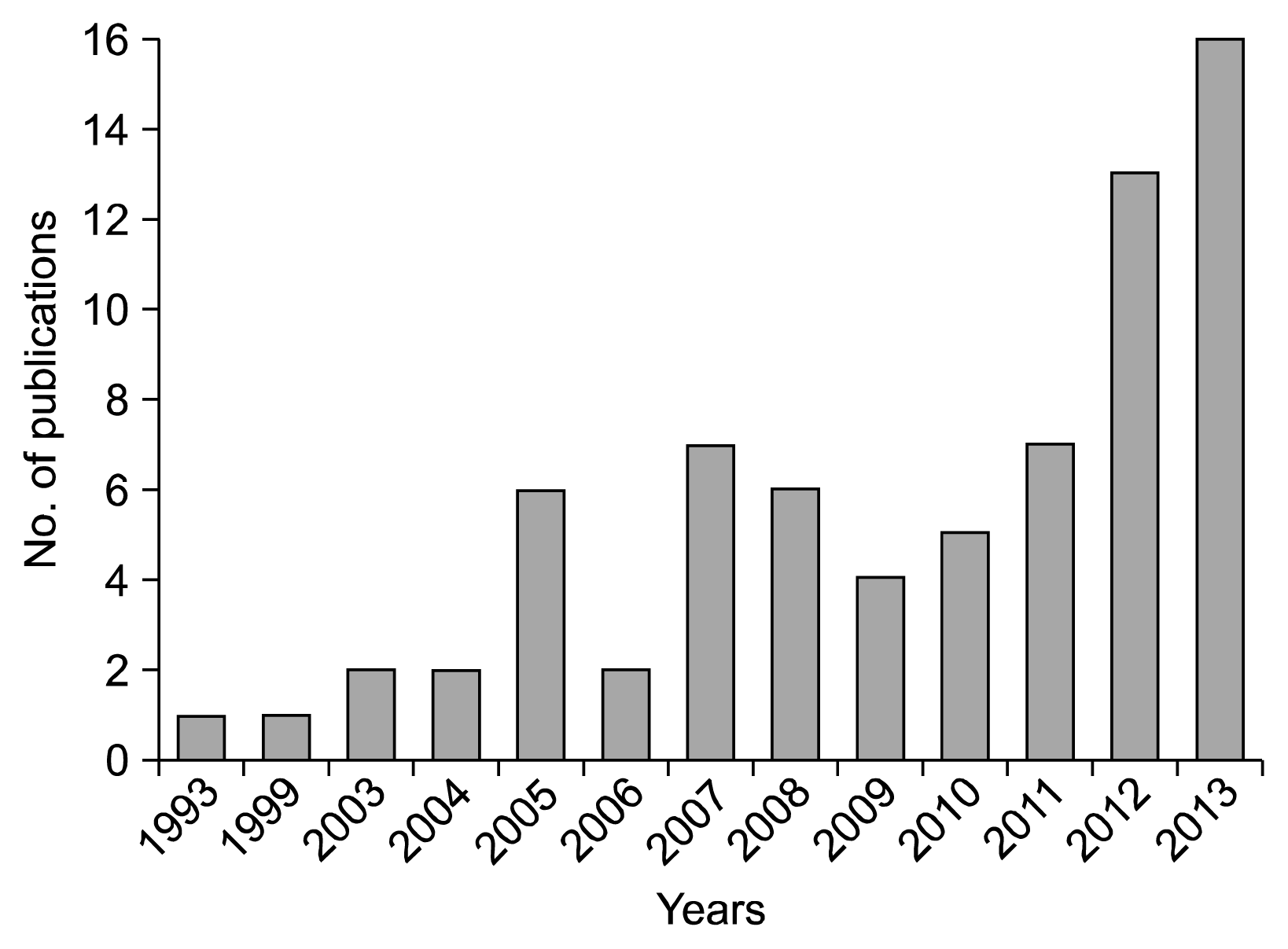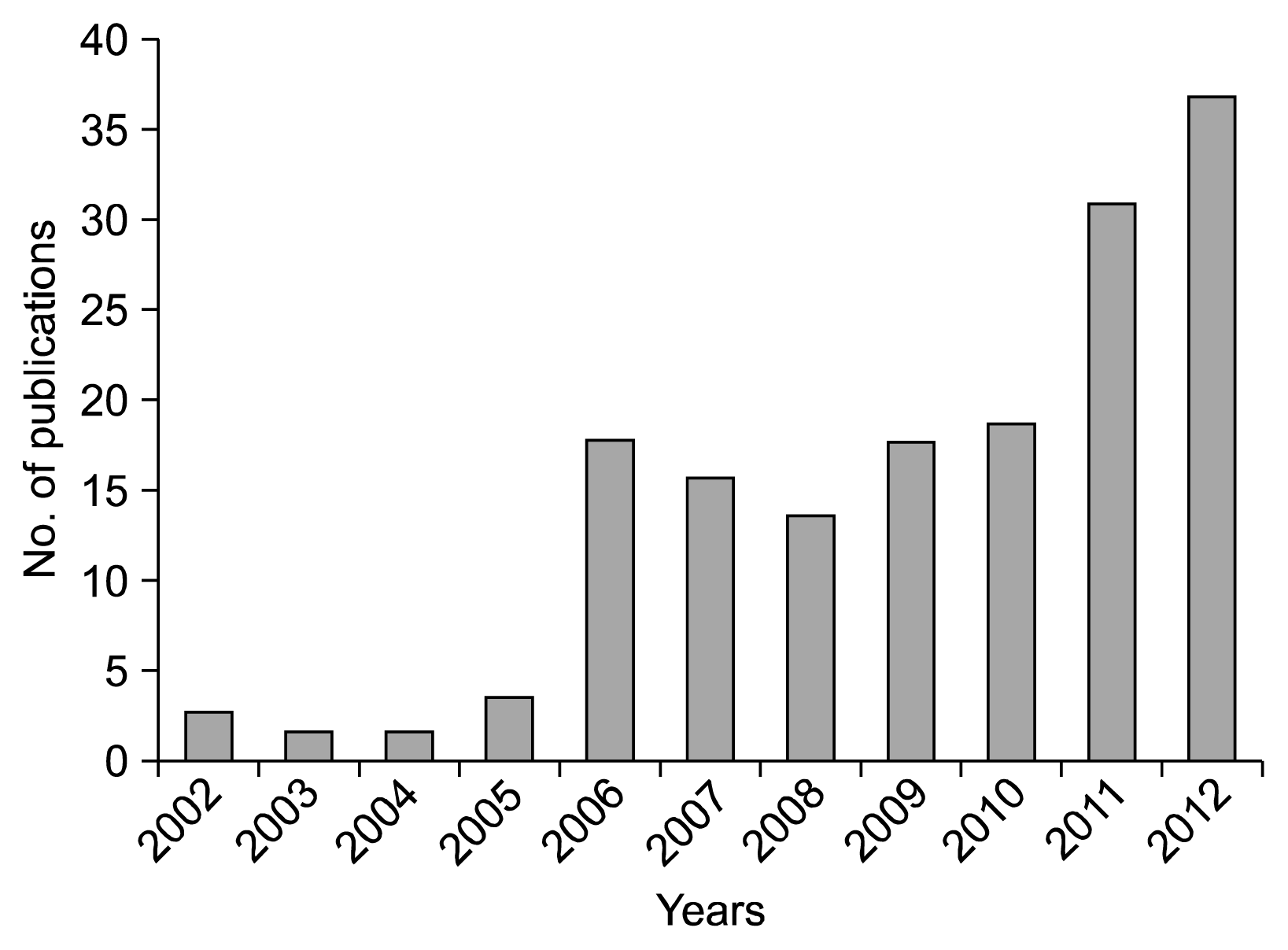1. Luo J, Flynn JM, Solnick RE, Ecklund EH, Matthews KR. International stem cell collaboration: how disparate policies between the United States and the United Kingdom impact research. PLoS One. 2011; 6:e17684. DOI:
10.1371/journal.pone.0017684. PMID:
21408134. PMCID:
3050923.

2. Luo J, Matthews KR. Globalization of stem cell science: an examination of current and past collaborative research networks. PLoS One. 2013; 8:e73598. DOI:
10.1371/journal.pone.0073598. PMID:
24069210. PMCID:
3772010.

3. Weissman IL, Anderson DJ, Gage F. Stem and progenitor cells: origins, phenotypes, lineage commitments, and trans-differentiations. Annu Rev Cell Dev Biol. 2001; 17:387–403.

4. Smith AG. Embryo-derived stem cells: of mice and men. Annu Rev Cell Dev Biol. 2001; 17:435–462. PMID:
11687496.

5. Schöler HR. The Potential of Stem Cells: An Inventory. Knoepffler N, Schipanski D, Sorgner SL, editors. Human biotechnology as Social Challenge. 2007. p. 28.
6. Ulloa-Montoya F, Verfaillie CM, Hu WS. Culture systems for pluripotent stem cells. J Biosci Bioeng. 2005; 100:12–27. PMID:
16233846.

7. Thomson JA, Itskovitz-Eldor J, Shapiro SS, Waknitz MA, Swiergiel JJ, Marshall VS, Jones JM. Embryonic stem cell lines derived from human blastocysts. Science. 1998; 282:1145–1147. DOI:
10.1126/science.282.5391.1145. PMID:
9804556.

8. Larijani B, Zahedi F, Malek-Afzali H. Medical ethics in the Islamic Republic of Iran. East Mediterr Health J. 2005; 11:1061–1072.
9. Baharvand H, Ashtiani SK, Valojerdi MR, Shahverdi A, Taee A, Sabour D. Establishment and in vitro differentiation of a new embryonic stem cell line from human blastocyst. Differentiation. 2004; 72:224–229. DOI:
10.1111/j.1432-0436.2004.07205005.x. PMID:
15270778.

11. Mirzadeh H, Mohagheghi MA, Ahmadi H, Mirkhani H, Amanpour S, Salehian P. Cartilage tissue engineering for ear as in rabbit model with perforated polyurethane pros-thesis: in vivo assay. Iranian Polymer Journal. 2000; 9:73–80.
12. Ghavamzadeh A, Alimoghaddam K, Jahani M, Mousavi SA, Iravani M, Bahar B, Khodabandeh A, Khatami F, Ghaffari F, Jalali A. Stem cell transplantation; Iranian experience. Arch Iran Med. 2009; 12:69–72.
13. Sharma A. Stem Cell Research in India: Emerging Scenario and Policy Concerns. Asian Biotechnology and Development Review. 2006; 8:43–53.
14. Savneet K, Karthac C. Stem cells: Concepts and prospects. Current trends in Science. 2009.
15. Jotwani G. ICMR-DBT Guidelines for Stem Cell Research. New Delhi: Indian Council of Medical Research;2012.
16. Jose S. Increasing Investment in Stem Cell Technology and Promising Research Outcomes Drives the Stem Cell Research Market. According to New Report by Global Industry Analysts. 2012.
17. Kirstin RW, Matthews , Maude LR. World stem cell report. Regen Med. 2012; 7:126–129.
18. Willemse L, Ogbogu U, Johnson S, Rudnicki M. World stem cell report: Canada. Regen Med. 2012; 7:132–135. DOI:
10.2217/rme.12.66. PMID:
23210826.
19. Emily J, Seymour C. World Stem cell report. Regen Med. 2012; 7:136–138.
21. Park SB. South Korea steps up stem-cell work: Regenerative medicine gets cash boost but stricter regulations are needed to ensure safety. Nature. 2012; DOI:
10.1038/nature.2012.10565.
22. Rodin S, Domogatskaya A, Ström S, Hansson EM, Chien KR, Inzunza J, Hovatta O, Tryggvason K. Long-term self-renewal of human pluripotent stem cells on human recombinant laminin-511. Nat Biotechnol. 2010; 28:611–615. DOI:
10.1038/nbt.1620. PMID:
20512123.

23. Rosalia MO, de Carvalho Antonio Carlos Campos. World Stem cell report, Brazil. Regen Med. 2012; 7:144–147.
25. Levicar N, Dimarakis I, Flores C, Tracey J, Gordon MY, Habib NA. Stem cells as a treatment for chronic liver disease and diabetes. Handb Exp Pharmacol. 2007; (180):243–262. PMID:
17554512.

27. http://www.hec.gov.pk/InsideHEC/Divisions/RND/ResearchGrants/NRPU/Pages/Forms/AllItems.aspx
28. Jackson KA, Majka SM, Wang H, Pocius J, Hartley CJ, Majesky MW, Entman ML, Michael LH, Hirschi KK, Goodell MA. Regeneration of ischemic cardiac muscle and vascular endothelium by adult stem cells. J Clin Invest. 2001; 107:1395–1402. DOI:
10.1172/JCI12150. PMID:
11390421. PMCID:
209322.

29. Robertson JA. Human embryonic stem cell research: ethical and legal issues. Nat Rev Genet. 2001; 2:74–78. DOI:
10.1038/35047594. PMID:
11253076.

30. Spencer DD, Robbins RJ, Naftolin F, Marek KL, Vollmer T, Leranth C, Roth RH, Price LH, Gjedde A, Bunney BS, et al. Unilateral transplantation of human fetal mesencephalic tissue into the caudate nucleus of patients with Parkinson’s disease. N Engl J Med. 1992; 327:1541–1548. DOI:
10.1056/NEJM199211263272201. PMID:
1435880.

31. Ahmad A, Ziauddin A, Shakoori AR. Isolation and culture of human amniotic fluid stem cells (AFSCS). Pak J Health Res. 2013; 1:32–35.
32. Khan M, Ali F, Mohsin S, Akhtar S, Mehmood A, Choudhery MS, Khan SN, Riazuddin S. Preconditioning diabetic mesenchymal stem cells with myogenic medium increases their ability to repair diabetic heart. Stem Cell Res Ther. 2013; 4:58. DOI:
10.1186/scrt207. PMID:
23706645. PMCID:
3707006.

33. Shakoori A, Ahmad A. Cytotoxic and Genotoxic effects of Arsenic and Lead on Human Adipose Derived Mesenchymal Stem Cells (AMSCs). J Stem Cells Regen Med. 2013; 9:29–36. PMID:
24693207. PMCID:
3908312.

34. Farzana T, Shamsi TS, Irfan M, Ansari SH, Baig MI, Shakoor N. Allogeneic peripheral blood stem cell transplantation for aplastic anaemia: a single centre experience. J Pak Med Assoc. 2003; 53:381–384. PMID:
14620309.
35. Ullah K, Raza S, Ahmed P, Chaudhry QU, Satti TM, Ahmed S, Mirza SH, Akhtar F, Kamal K, Akhtar FM. Post-transplant infections: single center experience from the developing world. Int J Infect Dis. 2008; 12:203–214. DOI:
10.1016/j.ijid.2007.06.012.

36. Shamsi TS, Hashmi K, Adil S, Ahmad P, Irfan M, Raza S, Masood N, Shaikh U, Satti T, Farzana T, Ansari S. The stem cell transplant program in Pakistan--the first decade. Bone Marrow Transplant. 2008; 42( Suppl 1):S114–S117. DOI:
10.1038/bmt.2008.137. PMID:
18724282.





 PDF
PDF Citation
Citation Print
Print





 XML Download
XML Download